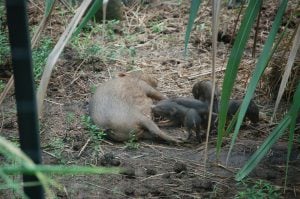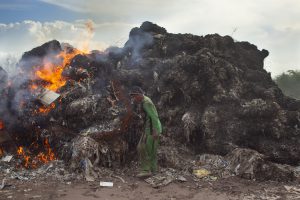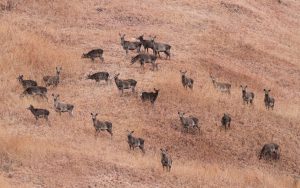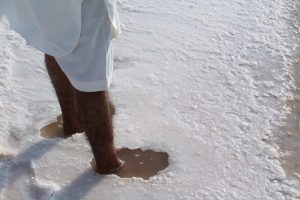15 years ago, when the Nepal Army patrolled in and around the Chitwan National Park, the villagers of Bankatta in Madi municipality were filled with fear. According to Narayan Bote, a local resident, villagers either used to stay inside their, or fled the area.
“The army and local people used to treat each other as enemies,” Bote recalled. The situation was almost the same in other villages near the national park. According to Pratap Pun Magar of Madi Municipality-8, the only source of grass, wood and pasture for the people was the national park but army personnel used to beat locals when they took their livestock near the park. Sometimes, said Mohan Bahadur Pun, this spilled over into violent clashes.
In the past, there was no interaction between army and local people. Now, the Nepal Army has joined hands with people from buffer zone to undertake the tasks related to conservation
In one instance Dhakaram Timalsena was returning home from the national park with dry grass for the roof of his house. According to him he did this during the time that the park was open to locals, but Army personnel beat him nevertheless, triggering a clash between them and the villagers. In another clash, local people captured a rifle from the Army personnel.
Changing situation
Much has changed in the last decade and a half, especially in civil-military relations. A month ago, a wild elephant came in Ayodhayapuri village which panicked local people. Army personnel came to village to chase away the elephant. The local army unit has provided a telephone number to call if villagers face any problems.
In the past, there was no interaction between army and local people. Now, the Nepal Army has joined hands with people from buffer zone to undertake the tasks related to conservation. In the buffer zone of Chitwan National Park, a community-based youth awareness campaign is in place. Under this plan 22 committees have joined hands with the army in conservation efforts.
The army is offering free-of-cost services in the construction related works in the buffer zone. According to Krishna Raj Adhikari, ward chair of Madi Municipality-8, Nepal army personnel assisted in the construction of the National Primary School. According to Adhikari, civil-military relations have substantially improved.
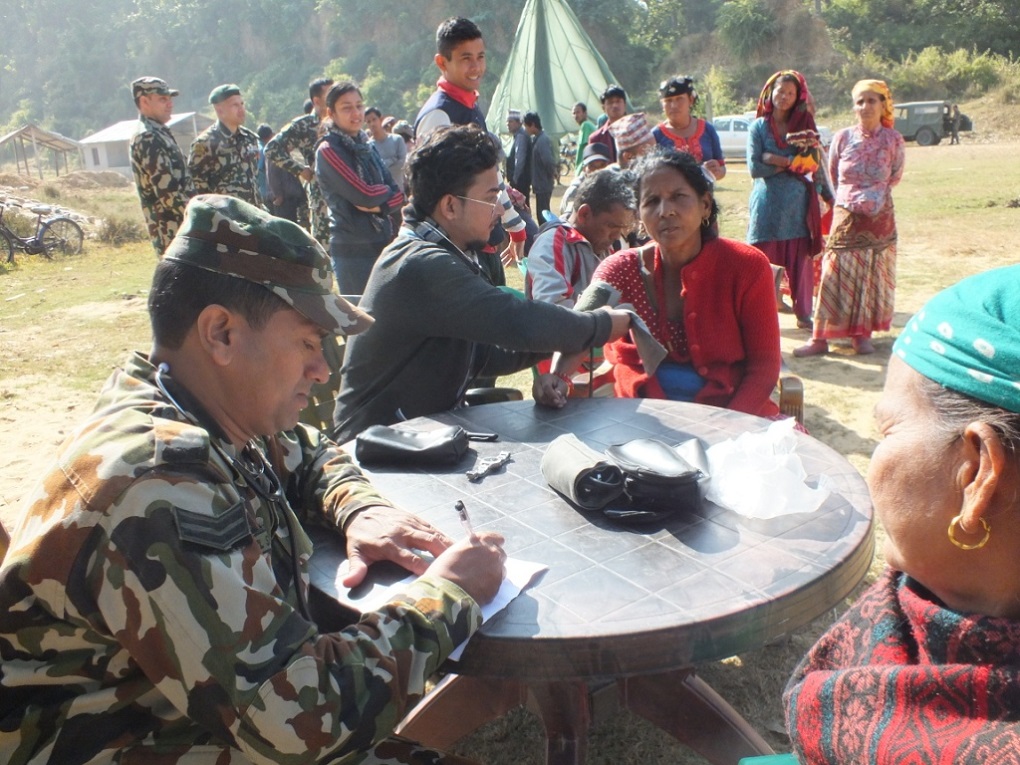
Spokesperson of Nepal Army Bigyan Dev Pandey said conflicts with local people has been minimized as a part of national army’s larger objectives of improving civil-military relation. According to the Nepal Army, a health check post, various awareness programs, sapling plantation campaign and other activities related to disaster risk management are being implemented as part of conflict reduction. The army is providing training to its personnel and officers who are deployed in conservation areas. “We provide training both to personnel and officers before we deploy them in the conservation which has contributed to improve civil-military relation,” Pandey said, “Army personnel who made mistakes were punished and arrangements were made where common people can file their complaints.”
Impact of buffer zone in conservation efforts
The real driver, though, is probably the buffer zone management programme, which has played a large role in bringing local people, the Nepal Army and national park administration together for the conservation. Implemented initially for the years 2013-17 to protect the country’s first national park, and deal with the needs of more than 260,000 people living in the area, it has been very successful. “The buffer zone has helped to bring all concerned together. If people have any complaints, buffer zone group helps to take them to administration and army, we seek solution through collective discussions and consultations,” said the former chairperson of Panch Pandav buffer zone users group. There are 1,779 such groups 856 of them female, 850 male, and 73 mixed groups, to cover all the needs of the people and receive their feedback.
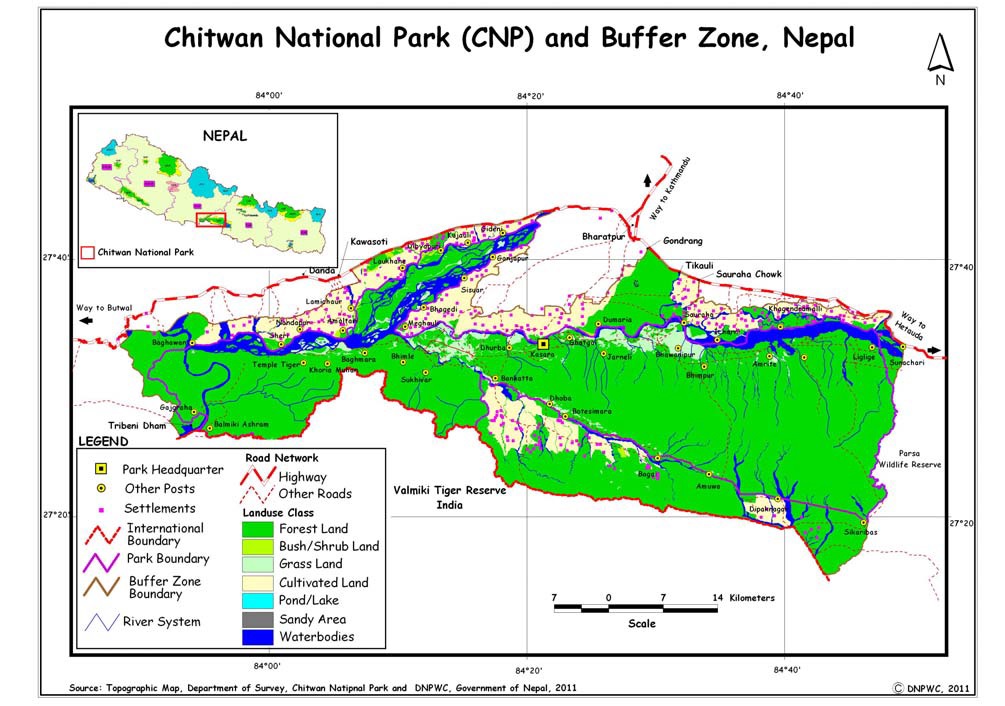
According to the department of national parks and wildlife conservation, the key purpose of declaring a buffer zone was to minimise the conflict between government and people, protection of habitat of wildlife and providing relief to people. One major intervention was the that the programme linked income for the region to community development. It stated that “the buffer zone generates large amount of money by tourism in the BZ [Buffer Zone] through resource mobilization. The BZMC [Buffer Zone Management Committee], the Users Committees/Sub committees and User groups have to allocate 30% of their budget for conservation, 30% for community development, 20% for income generation and skill development, 10% for conservation education and 10% administration.” The committees receive NPR 120-300 million (USD 1.05-2.63 million) from the park. This year it was NPR 130 million (USD 1.14 million).
Shifting professions
There are other factors too that have contributed to minimise the conflict between national park and local people. Local people have been changing their profession, there is growing awareness among people and both the government administration and army have made changes in their behaviour. This has helped to minimise the conflict and there is growing participation of local people in the conservation efforts.
Earlier, the main profession of local people was livestock so local people were forced to go to jungle to fetch feed for their cows and buffaloes. This is changing. For example, Pratap Pun Magar used to own six cows, for which he had to procure grass and other feed. Now he operates a home-stay. He is earning NPR 35-40,000 (USD 307-351) per month and is planning to run a fishery business. Similarly, Khil Bahadur Pun, Prabin Thapa Magar, Mohan Bahadur Pun and Sukmaya Rai have sold their cows and buffaloes and have started to operate a home stay business as tourists have started to increase in the area. This has substantially changed their income status. According to Prabin Thapa, each family earns approximately NPR 600,000 (USD 5,267) a year.
Bankatta is dominated by the Bote community – composed of fisherfolk. They have changed their profession from fishing to tourism and about a dozen youth have joined the Nepal army. “Now, it is not necessary to go for fishing for bread and butter, they are choosing alternative professions and there the important thing is there is an increased awareness and wildlife conservation,” he said. According to Conservation Officer Narayan Rupakheti of Chitwan National Park there 115 homestays in eight places adjoining the national park providing employment to more than 3,000 locals.

Human-wildlife conflict increasing
Though the conflicts between national park administration and local people is decreasing, there is a growing trend of human-wildlife conflict. Wildlife attacks on local people and destroy crops; and it is in increasing trend, according to department. In 2018-19 fiscal year (April 2018-March 2019) 30 people were killed and 140 injured by wildlife. 595 houses and sheds were destroyed or damaged and 1,593 domestic animals were killed. In the 2017-8 fiscal year, 17 people were killed, 65 injured, and 434 houses and sheds were destroyed, while 806 domestic animals were killed. In 2016-17, 22 people were killed, 43 were injured, 271 houses and sheds were destroyed, and 277 livestock animals killed.
This rising trend of human-animal conflict will need to be confronted, but with some trust created between the administration and locals, the region is far better placed to deal with it.
![<p>In the buffer zone of the Chitwan national park, the Nepal Amry’s relations with locals have moved from conflict to cooperation [image by: Mukesh Pokhrel]</p>](https://dialogue.earth/content/uploads/2020/01/IMG_3490.jpg)

